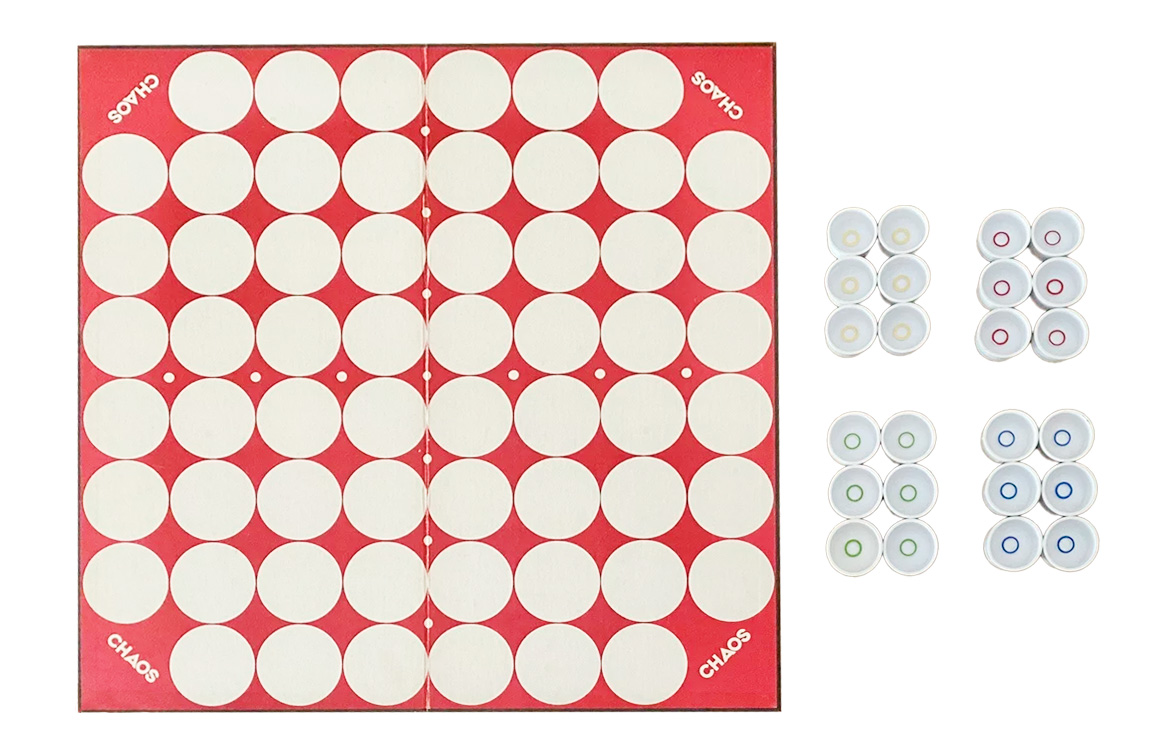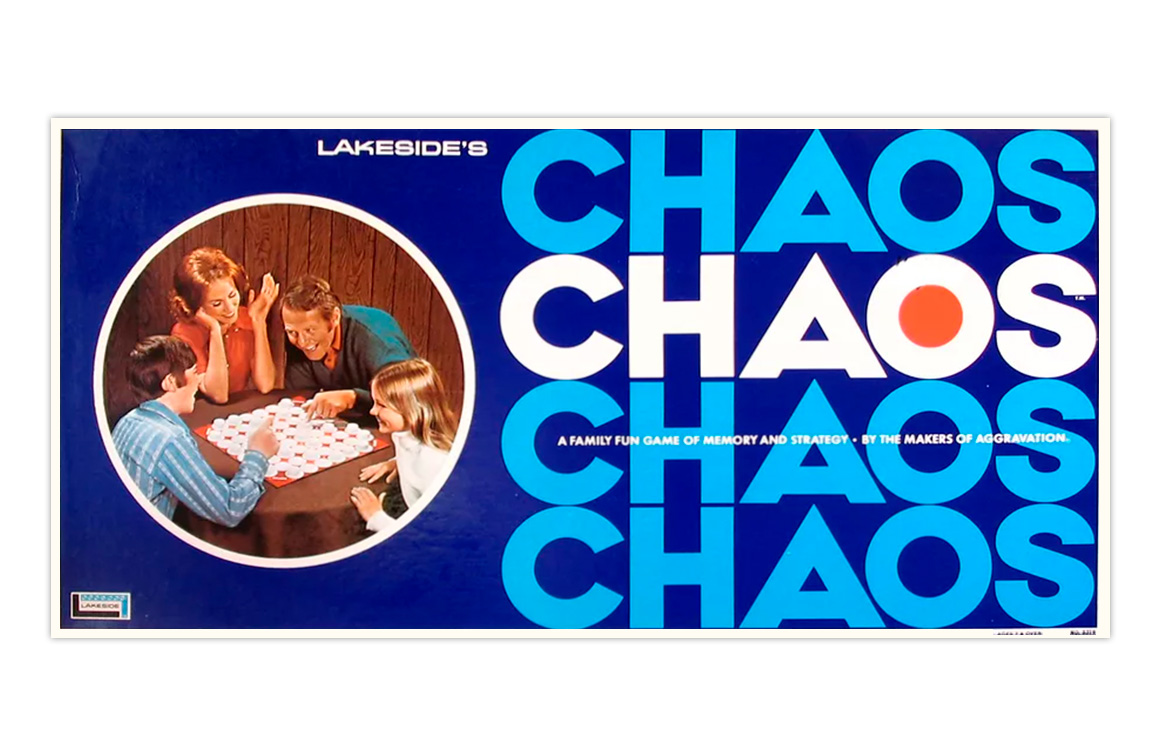“A family fun game of memory and strategy“
Released by Lakeside in 1971, the Chaos board game called on players’ observation and memory to navigate a chaotic race across the board.
GAMEPLAY
The object of the game was to be the first player to get all six of their playing pieces to the opposite side of the board.
The board was illustrated with rows of white circles. Each player had a row of six circles in front of them on which to place their pieces. The pieces were colour-coded on one side. Players chose six pieces of the same colour. The pieces were turned upside down — concealing the colour and making them look identical to opponents’ pieces — and placed on the starting row.
The player with the green pieces started the game.
Players moved one piece a circle at a time, in any direction, as long as there wasn’t another piece already on the spot. A player could jump an opponent to get to the next empty circle.
Players needed to move all their pieces off the starting circles before they were allowed to cross the centre of the board. As pieces congregated at the centre, the density made it tricky to keep track of one’s positions, and the risk of inadvertently moving an opponent’s piece increased.
Once across the centre line, the pieces could be flipped over to reveal their colour. If a player had made an error in judgement and moved the piece of an opponent, the opponent regained ownership of the piece and moved it on their next turn. The player then needed to figure out where they went astray and try to locate their lost piece.
A challenge could be declared when a player suspected that an opponent had moved a piece that was not theirs. The pieces were turned over to reveal the colour. If the challenger was right, the piece was moved back to its previous position, and the wrongful player lost a turn. If the challenger was wrong, they lost their turn.
The first player to get their set of six pieces to the opposite side of the board won the game.
VARIANTS
A two-player variant of the game saw each player take 12 pieces, and the board was placed on a diagonal. Players played from the 12 circles to the left and right of them and moved two pieces each turn.
A variant for young and/or new players used only three pieces per player to cause a little less chaos and make the game shorter and friendlier.
IN THE BOX
A complete game included a game board and 24 playing pieces (six each in red, blue, yellow, and green). Instructions were printed on the bottom of the box.
OTHER LAKESIDE GAMES
Other popular games from Lakeside include Barrel of Monkeys (1965), Reflex (1966), Mad Marbles (1970), Perfection (1973), and Intercept (1978).
Note: If you buy something using the eBay link in this story, we may earn a small commission. Thank you for supporting independent toy journalism!


